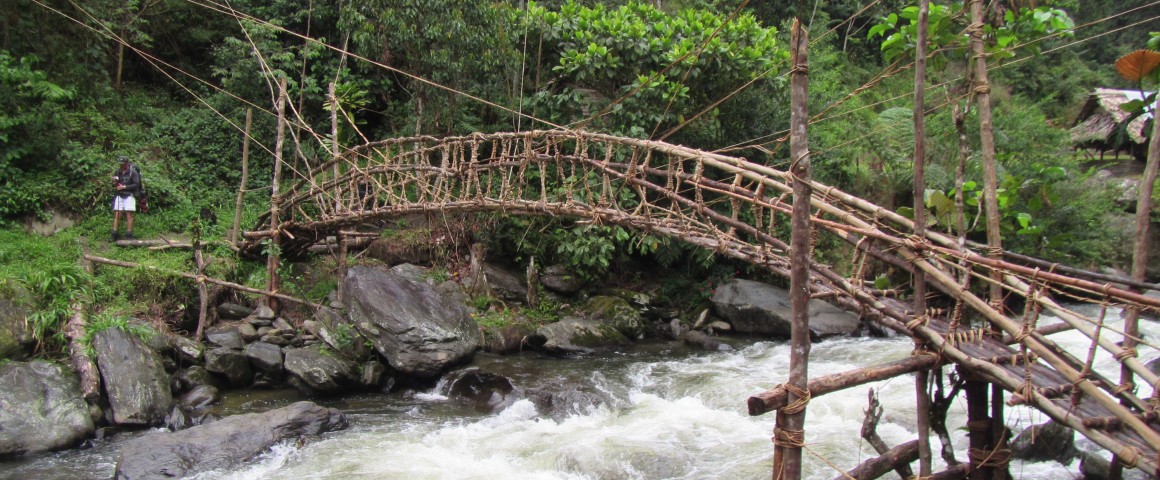In September 2004 I walked the Kokoda Track in Papua New Guinea. Back then it was the flavour of the month with politicians, sporting identities and media personalities all regularly visiting. Now, the only news from the track is negative, and that from Manus Island is no better. I got the opportunity to repeat the walk in May 2015 and found quite a few changes, mostly good, but some not so.
Nothing can change the physical nature of the Owen Stanley Range – the mud, the unending climbs and descents and the humidity. It’s still the same as when the 39th Battalion found it in mid-1942 – and as I found it in 2004. The big differences though, between 1942 and now, is that trekkers are wearing modern boots, eating half-decent food and can elect to have a local porter carry some or all of their backpack load. And, of course, they don’t have the Japanese shooting at them.
Despite the common elements, much has changed over the past ten years. Firstly, the track is not as busy. At its peak, around 4,000 trekkers made the journey during the six-month trekking season each year. Now the number is down to 2,400.
The nature of the villages along the track has also changed. There are now many more western style cottages, with iron roofs in the larger villages. Locals at Deniki (near Kokoda), check their mobile phones each morning for messages, and there are more (cold water) showers, guest houses and dining halls for trekkers along the way.
Villagers too have become more entrepreneurial. Ten years ago your porter would slash and trim a walking pole for you if you hadn’t brought your own aluminium one. Now, a Kokoda-based entrepreneur greets you at the museum with a selection of beautifully hand crafted and decorated poles – for sale at Kina30 each (approximately AUD$15) if you have left your own lightweight carbon one at home.
Previously it was rare to get the opportunity to buy a soft drink along the track, and bananas and other fruit were available on a ‘help-yourself’ basis to passing trekkers. Now, at nearly every village, bananas, avocados, Twisties, soft drinks and sometimes local handicrafts are available for sale (but beware – no one ever has any change!)
Over the years, Australian service club Rotary has done a great job building and supporting clinics in the larger villages, and generally the support from such groups has been worthwhile. There have been a few misguided gestures though – how useful is a ride on mower when villagers can’t get fuel for it?
Less so, perhaps, is the Kokoda Initiative – a 2008 agreement between the Australian Deptartment of Environment and the PNG government ‘to work together to protect and manage the Kokoda Track and Owen Stanley Ranges, and improve the livelihoods of communities living along the track’. With an expenditure of over AUD$4 million in FY 2013/2014, more than AUD$1.2 million (31 percent) was soaked up by administration, advisors and programme reviews. It seems a lot, but perhaps that’s just how these things work nowadays.
The Kokoda Track villages certainly look more prosperous than they did a decade ago, but I was surprised that they still have no electricity. With an abundance of fast-flowing, natural water, it seems the experiences of rural electrification in the Himalayas, northern Pakistan and Vietnam could be put to good use here. Our government is keen to help bring electricity to millions of rural Indians by supporting a controversial Indian-owned coal mine in Queensland, but there are good opportunities to do the same, much closer. And, as an aside, the outer areas of Port Moresby itself still look as shabby and unkempt as the worst villages you will ever see in Africa or India. PNG Prime Minister Peter O’Neill is reportedly tackling corruption, but there is still much to be done.
While there are equally difficult physical challenges available in Australia (for example, a traverse of the Western Arthurs in Tasmania), for a cultural and relevant historical experience, walking the Kokoda Track is still well worthwhile, and will give you much deeper insight into the lives of some of our closest neighbours.


